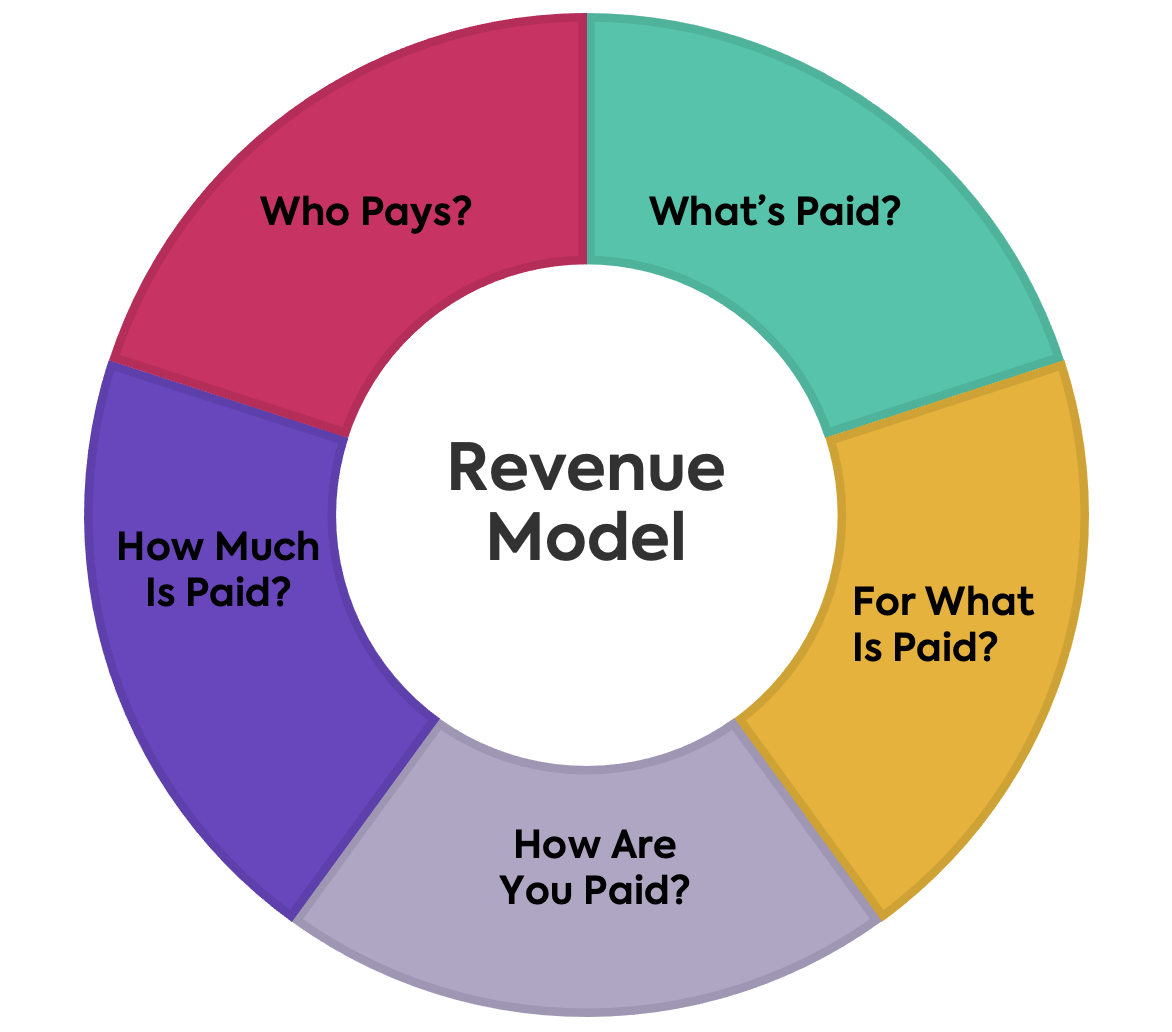Revenue Model
Revenue Model
What is Revenue Model
Definition:
A revenue model outlines how a business generates income from its products or services. It defines the pricing strategy, sales channels, and customer segments that contribute to the company’s overall revenue generation efforts. A well-defined revenue model is essential for guiding business decisions, attracting investors, and ensuring long-term financial sustainability.
Key Components of a Revenue Model:
- Pricing Strategy: The pricing strategy determines how products or services are priced and the value proposition offered to customers. Businesses can adopt various pricing models such as cost-plus pricing, value-based pricing, subscription pricing, or freemium models based on their market positioning, competitive landscape, and target customer preferences.
- Sales Channels: The sales channels represent the distribution channels through which products or services are sold to customers. These channels may include direct sales, online sales, retail distribution, partner networks, or affiliate marketing programs. Choosing the right sales channels enables businesses to reach target customers effectively and drive revenue growth.
- Customer Segments: Identifying target customer segments and understanding their needs, preferences, and purchasing behavior is crucial for revenue generation. Businesses can segment customers based on demographics, psychographics, geographic location, or behavioral characteristics to tailor marketing messages, pricing strategies, and product offerings to specific customer segments and maximize revenue potential.
- Revenue Streams: Revenue streams represent the sources of income generated by the business. These streams may include product sales, subscription fees, licensing fees, advertising revenue, transaction fees, affiliate commissions, or consulting services. Diversifying revenue streams reduces dependency on any single source of income and mitigates revenue risks associated with market fluctuations or changes in customer preferences.
Common Revenue Models:
- Subscription Model: Customers pay a recurring fee at regular intervals (e.g., monthly, annually) to access products or services. Subscription models offer predictable revenue streams and foster customer loyalty through ongoing engagement and value delivery.
- Transaction-based Model: Revenue is generated through individual transactions or sales of products or services. Businesses earn revenue each time a customer makes a purchase, completes a transaction, or engages in a specific action (e.g., commission-based sales, pay-per-click advertising).
- Advertising Model: Revenue is generated by displaying advertisements to users or promoting third-party products or services within the business platform. Advertising models monetize user traffic, engagement, or impressions and may involve various pricing models such as cost-per-click (CPC), cost-per-mille (CPM), or cost-per-action (CPA).
- Freemium Model: Basic product features are offered for free, while advanced features or premium content are available through paid subscriptions or upgrades. Freemium models attract a large user base with free offerings and convert a subset of users into paying customers by offering additional value-added services or premium features.
Factors Influencing Revenue Model Selection:
- Market Dynamics: Understanding market dynamics, competitive landscape, and customer preferences is essential for selecting the most suitable revenue model that aligns with market demand and business objectives.
- Value Proposition: The value proposition offered to customers, including product features, benefits, and pricing, influences the choice of revenue model and determines the perceived value of the product or service in the marketplace.
- Scalability and Growth Potential: Revenue models should support scalability and growth by accommodating increasing customer demand, expanding market reach, and adapting to evolving business needs and industry trends.
- Profitability and Sustainability: Revenue models should be financially viable, profitable, and sustainable over the long term. Businesses must consider factors such as cost structure, revenue projections, profit margins, and return on investment (ROI) when evaluating revenue model options.
Key Considerations:
- A well-defined revenue model is essential for driving business growth, maximizing revenue potential, and ensuring long-term financial sustainability.
- Businesses should carefully evaluate pricing strategies, sales channels, customer segments, and revenue streams to design a revenue model that aligns with market dynamics, competitive positioning, and growth objectives.
- Continuous monitoring, analysis, and optimization of the revenue model enable businesses to adapt to changing market conditions, capitalize on emerging opportunities, and drive sustainable revenue growth in dynamic and competitive business environments.





